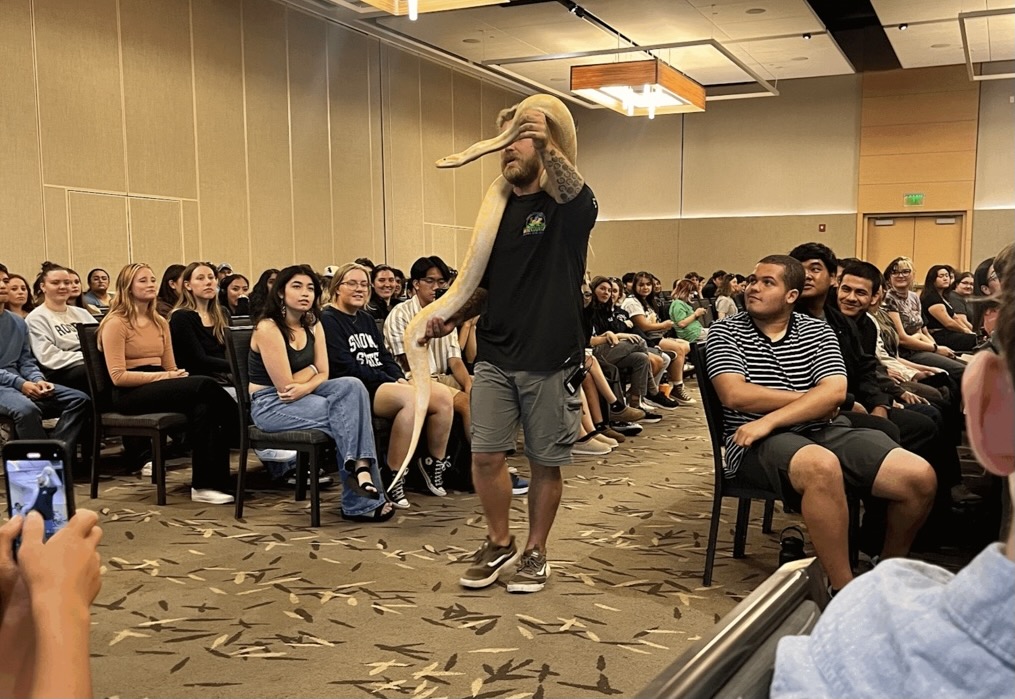A student who has ever taken a biology class at Sonoma State University most likely will have seen Suzanne DeCoursey, the Education and Reservations manager of Sonoma State’s Center for Environmental Inquiry, give her spiel promoting a hidden gem on campus.
At the beginning of every semester, DeCoursey promotes the Naturalist Program, where students can volunteer at one of Sonoma State’s preserves. The program teaches students how to become naturalists, which is a person that shares their wealth of knowledge of the natural world with others. Once trained, naturalists are able to work with several preserves Sonoma State has access to and owns.
“Preserves are apart of campus as much as the library or any other part of SSU.” DeCoursey said. These preserves, like Copeland Creek Gardens, Fairfield Osborn Preserve and the impressive 4,000 acre Galbreath Wildlands Preserve, are just another extension of learning available for students.
STAR // Ethan Prins
Education and Reservations Manager, Suzanne DeCoursey, informs students who are interested in an opportunity to intern for the preserve.
The naturalists at the preserves help facilitate academic activities, such as field trips for 3-5 graders, research projects, art projects, land management and also data collection.
By getting students to volunteer, it is a great way of learn how nature works. The preserves have encountered over 1,500 students in the past year, according to the Sonoma States Environmental Inquiry Brochure.
With this many active student participants, some of them have been able to turn this passion of learning about the nature into a job.
As Makayla Freed goes from a volunteer student to Student Stewardship Assistant and Naturalist, she said the reason she kept coming back was “the great sense of community and the ability to be in the natural world.”
Many volunteer naturalists can get internship credits for a number of majors and it is a great experience to put on your resume.
Joining the Center for Environmental Inquiry (CEI) to become a naturalist requires a certain amount of excitement for nature and teaching skills. As a naturalist, you will have to have patience since there will be many younger students under your guidance.
Megan Cassidy, a current volunteer student naturalist, said she was “excited to be able to spread the knowledge to others.”
As Cassidy became more comfortable with this, she “was met with a constantly growing group of likeminded, intelligent people and a space that feels like a home away from home.” With the strong connection she has had, it appears that the preserves has been an area of growth in knowledge and community.
The preserves are a tool for learning and the CEI is always looking for new naturalist to train.
“The preserves are fantastic resources that are there for students and anybody from any discipline can and should be a part of the great opportunities being offered by the preserves.” said Freed.
The programs welcomes all majors and naturalist expereince levels. Along with learning about the nature that is at our doorstep, working with the CEI as a volunteer naturalist is a fantastic way of stepping out of your comfort zone.
“Once you leave your comfort zone and start to branch out and find a rhythm, you begin to surprise yourself with what you are capable of.” Said Freed.



































